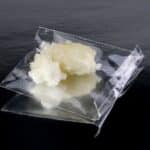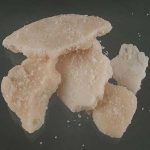Crack cocaine can be detected in your system for about 3 to 7.5 hours after the last use.
The short-term effects of cocaine and crack cocaine only last up to 30 minutes on average, but traces of the drug can be picked up by drug tests for a significant amount of time after the last use.
Illicit substance use for cocaine or crack cocaine can cause legal, employment, and health issues. After cocaine leaves your system, health issues like crack cocaine withdrawal symptoms may persist, making it difficult to quit.
Half-Life Of Crack Cocaine
Half-life is the length of time it takes for a drug to decrease to half its overall concentration after using it. Crack cocaine has a plasma half-life of around 40 minutes to 90 minutes. The half-life of crack cocaine is similar to powder cocaine, even though crack is a solid form of cocaine.
Half-life can be used to determine elimination time frames for prescription drugs, illicit drugs, and other substances. After five half-life cycles, most drugs are completely eliminated from the body. Five half-life cycles for crack cocaine are anywhere between 3 to 7.5 hours.
Factors that affect how long cocaine stays in a person’s system include the frequency of use, how the drug is used (snorting, smoking, or injecting), the amount of cocaine taken, the patient’s body fat, and other factors.
Drug Tests That Can Detect Crack Cocaine
Due to the short half-life of crack cocaine, drug screenings look for metabolites, or unique parts of a drug, that remain in the body for longer after crack cocaine use.
Benzoylecgonine is a metabolite of crack cocaine that can be a sign of recent drug use. It has a half-life of around 5-7 hours, which is longer than the parent drug. Detection times for benzoylecgonine also tend to be longer than crack.
Cocaethylene is a metabolite that results from a combination of benzoylecgonine and ethanol in the blood. It may appear on tests if a patient was drinking alcohol and using crack cocaine around the same time. The half-life of cocaethylene is around 2 hours on average.
Urine Tests
Urine tests can pick up cocaine in the urine up to 1 day after the last use, and benzoylecgonine up to 2 days after the last use.
Urine tests are a common testing method for cocaine detection. They are non-invasive and tend to produce accurate results.
Blood Tests
Blood tests can detect cocaine metabolites for several hours after the last use.
Blood tests tend to be an accurate type of test, but they are invasive and detection windows are usually shorter than urine tests. Blood tests may be done on hospitalized patients who are showing side effects of substance abuse or a drug overdose.
Saliva Tests
Saliva tests can detect cocaine and cocaine metabolites for up to 48 hours after the last use. Saliva tests may involve a mouth swab or extracting saliva directly from the mouth. The saliva sample is then tested for parent drugs and their metabolites.
Hair Tests
Hair tests can find crack cocaine in hair follicles up to 90 days after the last use. Crack cocaine can reach hair follicles through the bloodstream, where they will stay as the hair grows out.
Most substances stay in the hair for the longest period of time after they are taken. However, factors like hair growth rates and coloring present in the hair can affect the accuracy of these tests.
After a patient goes through detox during a drug addiction treatment program, they may go through several drug tests. Testing may be done alongside treatment options like behavioral therapy.
To learn about our outpatient treatment programs for yourself or a loved one, please contact Northeast Addictions Treatment Center today.
Sources
Written by
Northeast Addition Editorial Team
©2024 Northeast Addition Center | All Rights Reserved
This page does not provide medical advice.






